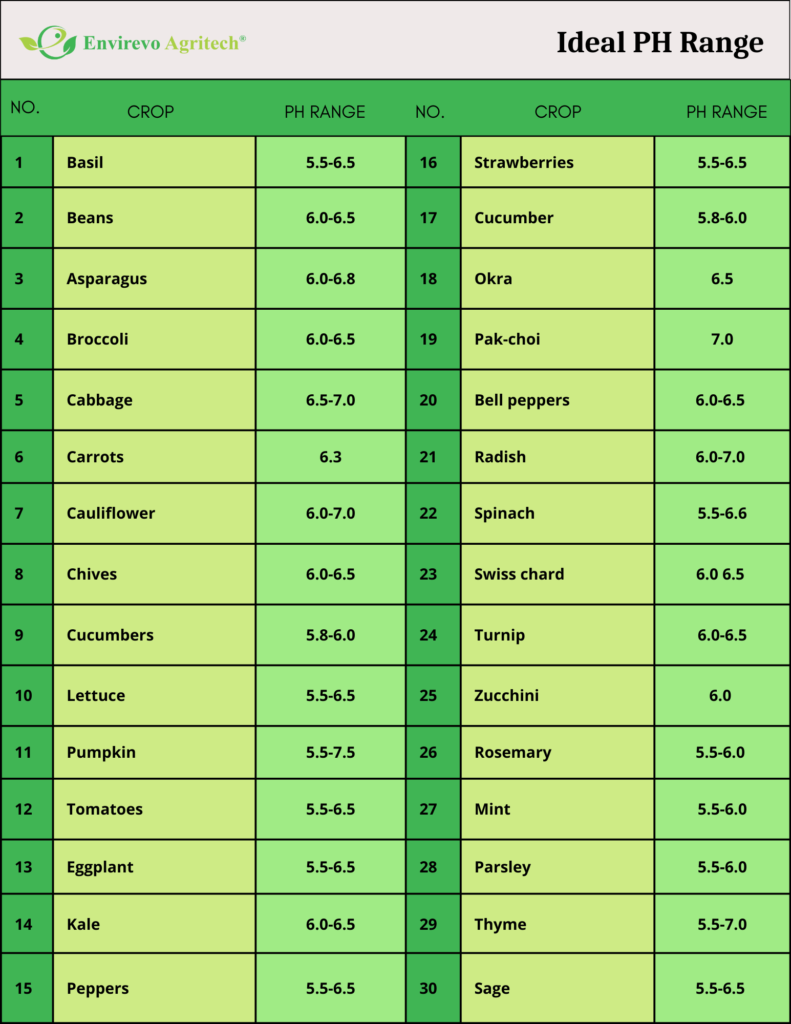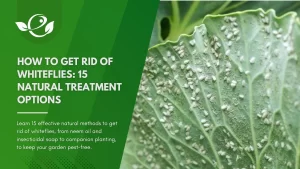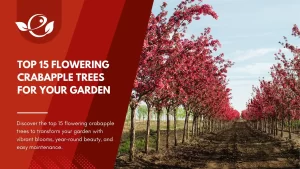Table of Contents
Do you know what’s the most important thing in hydroponics after water, air, and love? You guessed it right, it’s pH! Yes, that tiny little two-lettered abbreviation holds the key to a thriving hydroponic garden. So, if you’re planning to dive into the world of hydroponics, you better make friends with pH because you two are going to be inseparable.
Now, for those who don’t know, hydroponics is a method of growing plants in water-based nutrient solutions without the use of soil. And the benefits? Well, let’s just say, hydroponics is the cool kid on the gardening block. It saves water, takes up less space, and produces healthier plants that grow faster and give higher yields. Plus, it’s a great way to impress your friends with your gardening skills without getting your hands dirty.
But, as I said earlier, pH is the heart and soul of hydroponics. Why, you ask? Well, because pH determines the availability of nutrients for plants. You see, plants can only absorb nutrients in a certain pH range. If the pH is too high or too low, the nutrients become unavailable, and the poor plants are left hungry and malnourished. It’s like trying to feed a vegetarian a juicy steak – it’s just not going to work out.
So, if you want your plants to be happy and healthy, you need to monitor and adjust the pH of your nutrient solution regularly. And don’t worry, it’s not rocket science. With a little bit of practice and a good pH meter, you’ll be a pH pro in no time.
Cracking the pH Code in Hydroponics:
pH – it’s that term we all remember from our high school chemistry class, right? And just when we thought we had escaped the clutches of acidic and basic solutions, it comes back to haunt us in hydroponics!
But fear not, dear readers! Understanding pH is key to unlocking the full potential of your hydroponic garden. So let’s dive in!
Let’s start with the basics. pH stands for “potential hydrogen” and refers to the concentration of hydrogen ions (H+) in a solution. Simply put, it’s a measure of how acidic or basic a solution is, ranging from 0 to 14 on the pH scale, with 7 being neutral, values less than 7 acidic, and those greater than 7 basic or alkaline.

Now, before you start picturing your hydroponic garden turning into a mini science lab, let’s break down what all of this means. pH is essentially a measurement of the concentration of hydrogen ions (H+) in a solution. The more hydrogen ions in a solution, the lower the pH, making it more acidic. Conversely, the fewer hydrogen ions, the higher the pH, making it more alkaline.
To sum it up, pH is a critical factor in hydroponics that directly affects the availability of essential nutrients to your plants. It’s essential to regularly monitor and adjust the pH level to ensure optimal growth and yields. So, don’t forget to give your pH level the attention it deserves, and your plants will thank you with a bountiful harvest!
Why pH is Important in Hydroponic Systems?
In hydroponics, maintaining the correct pH is crucial for ensuring optimal plant growth and yield. This is because pH affects nutrient availability and absorption by plants, ultimately impacting their health and growth.
Acidic pH levels are typically below 6.0, while alkaline levels are above 7.0. For hydroponic gardeners, maintaining a pH level between 5.5 and 6.5 is ideal for most plants. However, some plants may require a slightly higher or lower pH level, so it’s essential to research the specific pH requirements for each type of plant you’re growing.
It’s essential to keep your pH levels in check in hydroponics because plants rely on the nutrient solution to absorb the essential nutrients they need to grow. If the pH is too high or too low, the nutrients in the solution won’t be available to the plants, even if they’re present. This can lead to stunted growth, discoloration, and even death of the plants.
For example, at low pH levels (below 5.5), the solubility of calcium, magnesium, and phosphorus decreases, which can cause calcium and magnesium deficiencies and stunted growth. At high pH levels (above 7.5), iron, manganese, and zinc become less available, causing chlorosis (yellowing of leaves) and reduced growth.
So, now that we’ve got the basics of pH down let’s dive deeper into how to measure and adjust pH levels in your hydroponic setup.
Why do pH Levels change in Hydroponic Systems?
You already know that maintaining the proper pH level is critical for your hydroponic garden. However, pH imbalances can occur due to various factors such as the use of hard water, nutrient depletion, or microbial activity. These imbalances can have negative effects on plant growth and nutrient absorption, leading to stunted growth and deficiencies. It is essential to monitor pH levels regularly to identify and correct any imbalances quickly.
Hard water can cause an increase in pH levels, while nutrient depletion can cause a decrease in pH levels. Microbial activity can also affect pH levels by producing acidic or alkaline byproducts. A high pH level can result in nutrient lockout, where essential nutrients become unavailable to plants, leading to deficiencies. On the other hand, a low pH level can result in nutrient toxicity, where excessive nutrients become available to plants, leading to nutrient burn.
Monitoring pH levels regularly using a pH testing kit or pH meter is crucial for identifying and correcting any imbalances. Adjusting pH levels using pH up or pH down solutions can help maintain optimal pH levels for your plants. Understanding the common causes of pH imbalances and their effects on plant growth and nutrient absorption can help you maintain a healthy and thriving hydroponic garden.
Monitoring pH
A critical part of maintaining the proper pH level in your hydroponic system is monitoring it regularly. Without proper monitoring, it can be challenging to identify and correct any pH imbalances that may arise.
There are two main ways that we can test pH. The first is using a colour indication and the second is by using a pH probe, the latter being far more accurate. Determining pH by colour indication relies on paper strips or by adding some drops of indicator solution into a sample of water. If it turns a light green colour this indicates it is slightly acidic around 5.5-6.5. If it is more acidic than this it will start to go yellow, but these are all estimations,
pH probes are far more accurate because they give you a digital reading. Most will give a reading +/- 0.1 and this is close enough for our purposes. Place the probe into the nutrient solution and in no time at all you will have a pH reading. Avoid cheaper probes because they will give results that jump around a lot, making it hard to get a solid reading.
To ensure the accuracy of your pH readings, it is recommended to calibrate your pH meter regularly. It’s also best to take pH readings from several different locations within your hydroponic system to get a more accurate reading.
It is recommended to monitor pH levels in your hydroponic system at least once a day, or every time you add or change the nutrient solution. You should also monitor pH levels after adjusting the nutrient solution or adding any supplements or additives. However, the frequency may vary depending on the size of your system and the type of plants you are growing. Best practices include taking multiple readings and averaging them out to ensure accuracy and keeping track of pH levels over time to identify any trends or patterns.
By regularly monitoring pH levels in your hydroponic system, you can ensure that your plants are receiving the optimal nutrient levels they need for healthy growth and development.
Hydroponic pH level for perfectly grown plants
As mentioned above, each plant has a different nutrient requirement, so the hydroponic pH level will also be different for the plant to grow properly. It is crucial to understand the pH range for specific crops to provide them with the best growing environment. Here is a Table for pH ranges for popular hydroponic crops:

It is important to also consider the electrical conductivity (EC) of your hydroponic solution. The pH requirements of plants and the EC interact with each other. When a high EC is measured, this means more nutrients are dissolved in the solution, playing an important role in the plant’s growth.
Balancing pH in Hydroponic Systems: Keeping Your Plants Happy
Now, we all know that maintaining the right pH level in hydroponic systems is critical for the healthy growth of your plants. But let’s face it, sometimes your plants can be a bit picky. They’re like the divas of the plant world, and if their pH levels are off, they can throw a tantrum and refuse to grow. So, how do you keep your plants happy and avoid a plant tantrum? By balancing the pH level, of course!
First things first, you need to know how to adjust the pH level of your hydroponic system. There are various methods for doing this, such as using pH up and pH down solutions or adding certain nutrients to the water. Just be sure to use high-quality pH adjusters, or your plants might throw a fit.
Here’s what you’ll need:
- pH strips or pH probe
- 1L pH Down (Phosphoric Acid)
- 0.25L pH Up (Potassium Hydroxide)
- Pipettes
- Stirring Rod (bamboo cane)
- Goggles and Gloves
- First, you need to fill your reservoir with water and add the appropriate amount of nutrients, mixing it thoroughly with your stirring rod. Always remember to add nutrients before measuring pH because they can alter the results.
- Measure the pH, ideally with a probe. In this example, we will be growing Lettuce at a pH of 6.2, but our readings give a pH of 7.2 in our reservoir.
- Wearing eye protection and gloves, fill a pipette full of pH Down solution and begin to add it drop by drop. If there is a large difference in pH it is sometimes okay to add the solution more liberally.
- Mix the whole solution thoroughly with your stirring rod and then take another pH reading.
- Repeat this until you get your desired pH of 6.2. If you overshoot (<6.2) you can add pH Up by the drop until you’re back into range.
- Check your pH once a day and every time you fill up your reservoir.
Using high-quality pH adjusters is crucial for the health of your plants. Poor-quality pH adjusters can contain impurities that can harm your plants. It’s best to use pH adjusters that are specifically formulated for hydroponic systems. These adjusters are pure and free from any impurities that can harm your plants.
Common mistakes
When adjusting pH levels, there are some common mistakes that you should avoid. One of the most common mistakes is adding too much pH adjuster. Overcorrection can be detrimental to your plants and can cause nutrient imbalances. Another mistake is not stirring the nutrient solution enough after adding the pH adjuster. It’s important to mix the solution well to ensure that the pH adjuster is evenly distributed.
Tips for maintaining stable pH levels in hydroponic systems
Maintaining stable pH levels is crucial for the health of your plants. To maintain stable pH levels, you should check the pH levels of your nutrient solution regularly. It’s recommended to check pH levels at least once a day. Additionally, it’s important to avoid overfeeding your plants. Overfeeding can cause nutrient buildup, which can affect the pH levels of your system. Finally, it’s best to use pH buffering solutions that help maintain stable pH levels.
Finally, to maintain stable pH levels, try to avoid sudden changes in temperature or water quality. Your plants don’t like being thrown for a loop any more than you do. Keep the temperature consistent and make sure your water source is clean and free of contaminants.
Troubleshooting pH Problems in Hydroponic Systems
Even with proper monitoring and maintenance, pH imbalances can still occur in hydroponic systems. It’s essential to know how to recognize and address these issues to ensure the health and vitality of your plants.
Common pH problems and their causes
Some of the most common pH problems in hydroponic systems include:
- pH drifting: This is when the pH level gradually changes over time due to the accumulation of nutrients or the release of acids and bases by plants or other organisms in the system.
- pH spikes: This occurs when the pH level suddenly rises or falls due to a sudden influx of nutrients or other factors, such as water quality.
- pH lockout: This is when the pH level becomes so far out of range that certain nutrients become unavailable to the plants, leading to deficiencies and stunted growth.
Symptoms of pH imbalances in hydroponic systems
The symptoms of pH imbalances can vary depending on the severity of the issue and the type of plants in your system. However, some common signs of pH problems include:
- Yellowing or browning of leaves
- Stunted growth
- Wilting or drooping of leaves
- Poor fruit or flower production
- Root rot or other fungal issues
Steps to take when pH levels are too high or too low
If you detect a pH imbalance in your hydroponic system, there are several steps you can take to correct it, including:
- Flushing the system with pH-balanced water
- Adjusting the pH level using a pH up or pH down solution
- Adding acid or base solutions to the system to rebalance the pH level
- Testing the nutrient solution and adjusting the nutrient levels as needed
Preventative measures for avoiding pH imbalances
To prevent pH imbalances from occurring in the first place, consider taking these preventative measures:
- Test the pH level regularly and adjust as needed
- Use high-quality pH adjusters and other nutrients
- Keep an eye on water quality and ensure that it is free of contaminants
- Avoid overfeeding or underfeeding your plants
- Maintain a stable temperature and humidity level in your grow room
By following these troubleshooting and preventative measures, you can maintain the proper pH level in your hydroponic system and ensure the healthy growth of your plants.
That’s it!
In conclusion, pH is a critical factor in the success of your hydroponic garden. By maintaining the proper pH range for your plants, you’ll ensure they have access to all the nutrients they need to grow big and strong. But remember a “pH lure” to plant problems can quickly lead to a “pH fail” in your garden. So, make sure to monitor your pH levels regularly and adjust as needed. And don’t be afraid to experiment a little to find what works best for your unique hydroponic setup. Just try not to go too far down the “pH rabbit hole” – your plants might start to think you’re a mad scientist!








